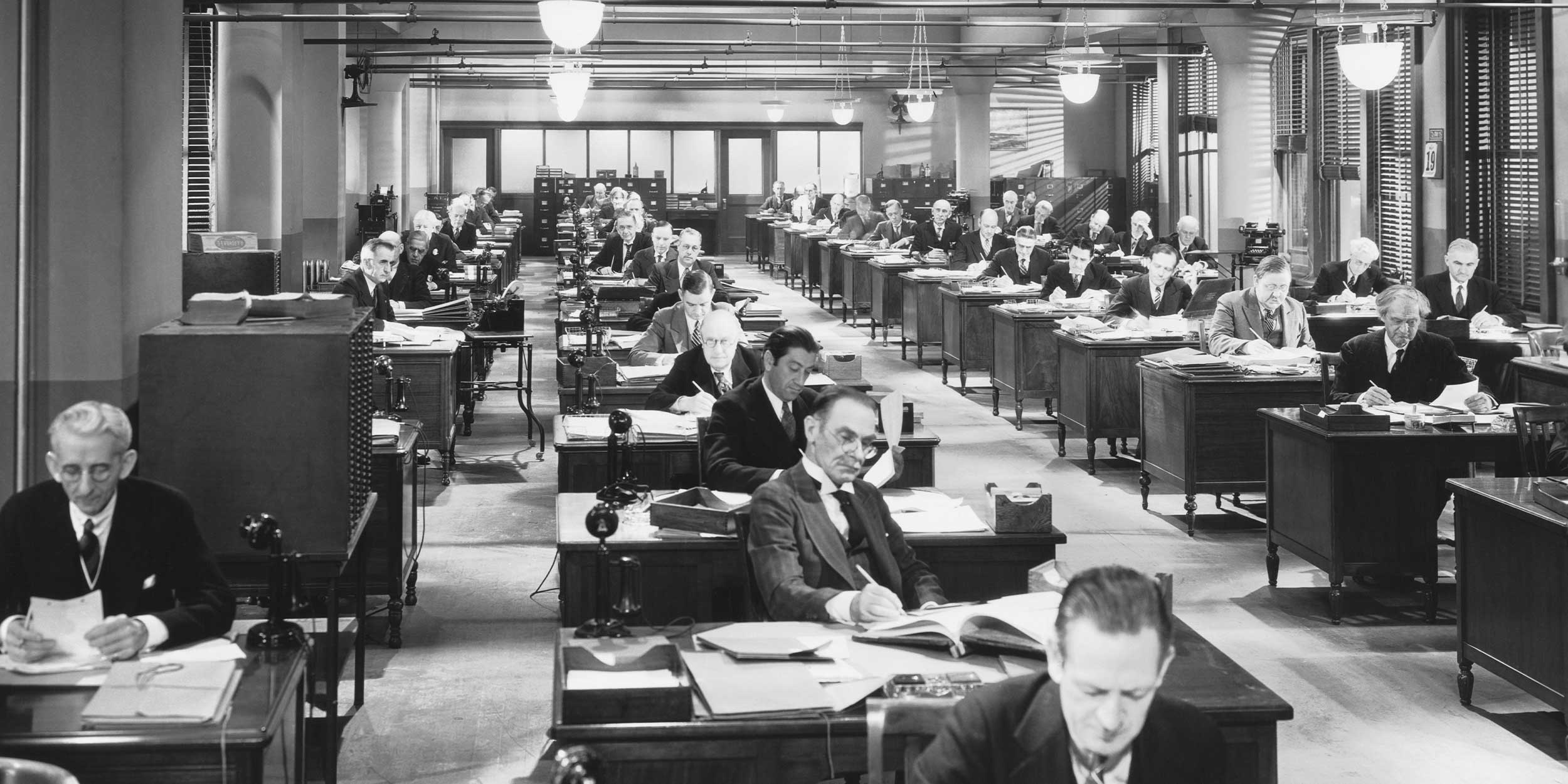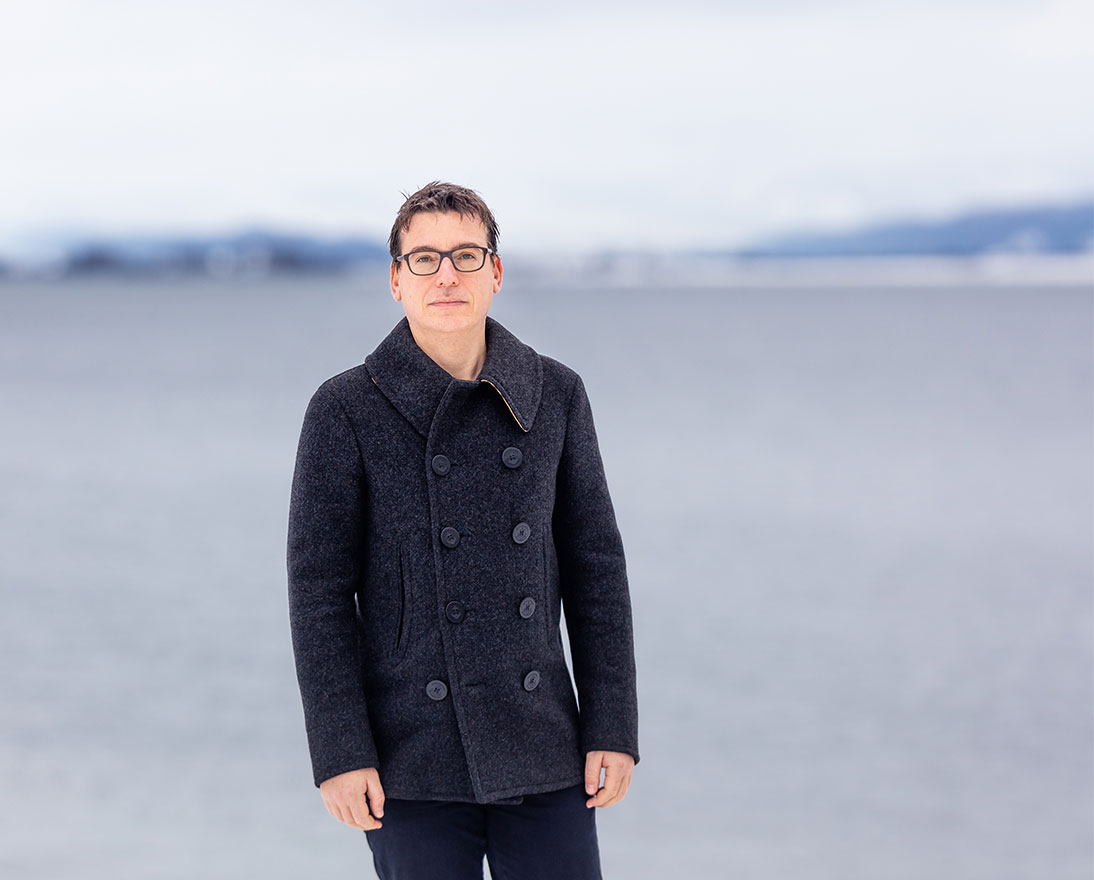Is the office history?
TechnologyArticleApril 29, 2021
Ladies and gentlemen, welcome to our museum. Here, you can see our exhibit, ‘Conventional Office.’ It’s where your grandparents worked…
Will this be our future? The office as a relic of the past? In the world of professional real estate, where “location, location, location” has long been the mantra, office property owners now consider things like ‘micro-locations’ and how well companies are able to integrate hybrid working-from-home models. They talk about flexible floorplates. Will they soon stop talking about offices all together?
Zurich Insurance Group (‘Zurich’), among the world’s largest property investors, is closely studying trends that affect demand for commercial real estate, including offices. Even before a pandemic there were forces reshaping the environment, ranging from the desirability of specific neighborhoods (so-called micro locations), to the ease of commuting. Then COVID-19 left many office workers confined at home. Of course, we are all curious to know how and where we will work in future. The only certainty, perhaps, is that much is still uncertain. And as with most things involving uncertainty, it pays to be cautious – or, as investors say, “defensive.”
“Office space isn’t just office space,” says Olafur Margeirsson, Senior Real Estate Strategist in Zurich’s Investment Management unit. As one of those helping to manage about USD 16 billion in real estate as part of Zurich’s investments, Margeirsson is used to seeing cycles in property markets. Yet even professionals are surprised by some of the trends that have been led, or exacerbated, by the pandemic.
For one, COVID-19 has intensified a shift in demand for different types of office space. During the pandemic, office workers learned to bake bread while doing deals, and helped kids with schoolwork as they talked to customers via remote hook-ups.
Herding people who have gotten used to working from home back into offices will, according to experts, mean increased demand for a variety of different working spaces: there will be more meeting rooms so people interact when they do come together, and a desire for more quiet spaces where individuals can concentrate if they don’t want to work at home. What will be less in demand are the general, open, non-dedicated seating areas which offer neither group meeting space, nor privacy. “The open-plan office as such will probably be at the losing end of the spectrum,” according to Margeirsson.
Anyone who has bought property, even a vacation home, knows a variety of things can make a big difference in market value and desirability: interest rates fluctuate, families grow, neighborhoods change. When it comes to managing huge office properties, the kind that cater to thousands of human beings in busy locations, decisions are even more complicated, while changes wrought by a pandemic have magnified uncertainty. “What has happened is that clearly defensive real estate assets – assets which are currently let to secure tenants for the long term or able to adapt to the coming changes in office space demand – are seeing strong demand among investors. As you move toward properties that face more uncertain rental market demand, investors’ interest doesn’t fall linearly, but exponentially,” Margeirsson says.
Flexibility, sustainability driving demand
Sustainability is a major consideration. That includes at Zurich, where the real estate strategy focuses on incorporating environmental sustainability standards and qualities in its properties. It has reduced total emissions from office facilities and expects to increase the percentage of renewable electricity used in its offices worldwide.
Zurich’s global headquarters, ‘Quai Zurich Campus,’ in the city of Zurich near the shores of Lake Zurich, is set to reopen in 2021. Many of Zurich’s employees spent a good part of 2020, into 2021, working from home. The amenities of Quai Zurich Campus should make the transition back to the office easier. It is the first property in Europe and only the third worldwide to achieve the highest platinum level certification of the international Leadership in Energy and Environmental Design (LEED) building standard and platinum certification for WELL, a rating system that measures and monitors how buildings affect human health.
The design will offer flexible configurations, accommodating employees’ needs to meet, or to have quiet space. They can even enjoy coffee in an outdoor café that is open to the public, as well as to employees. The Quai Zurich Campus buildings will also offer many smart amenities giving employees information about available workspaces, and help them to navigate and order food, for example. By being more efficient, a building can also help to support sustainability.
More sustainable real estate is the carrot in terms of corporations’ interest in renting green office space. Increasingly strict regulations are more like a stick, and these regulations are also driving demand for sustainable offices. For example, from January 2023, most office buildings in the Netherlands will need to at least have a C energy level.
So welcome to our museum, ladies and gentlemen! Enjoy your visit to our office of the past. These were places that were once going to revolutionize our lives. Yes, there are still offices, but the evolution of the office has favored those that are sustainable and smart.
What will happen to the rest of the office space that doesn’t meet these requirements? Perhaps as more people work from home at least part of the time, some of these unused offices will be converted into private residences. Maybe in the future, we’ll see another new work model. Instead of working from home, it will be called “working from a place that is now a home, that years ago used to be an office.”



